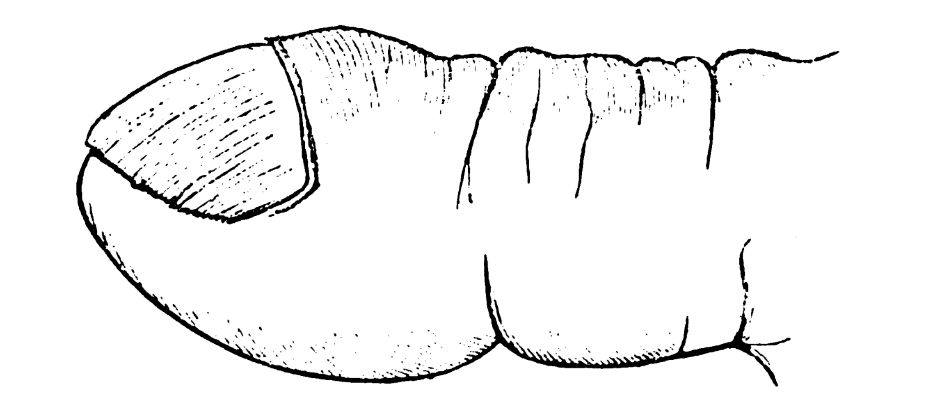Eugen von Bamberger
Eugen von Bamberger (1858-1921) was an Austrian internist
Eugen von Bamberger was a meticulous clinician and diagnostician whose name lives on in the eponymous Bamberger–Marie syndrome. Though he published sparingly, his few contributions, notably from the late 1880s, were of such clinical precision that they secured him enduring recognition in medical history.
The son of renowned Viennese pathologist Heinrich von Bamberger (1822–1888), Eugen studied medicine in Würzburg and Vienna, receiving his doctorate in 1882. He trained under Hermann Nothnagel (1841–1905) at the Allgemeines Krankenhaus in Vienna, quickly becoming one of its most respected diagnosticians. In 1891, he became director of internal medicine at the Rudolfsspital, where he remained for the rest of his career.
Bamberger’s name became linked with Pierre Marie (1853–1940) following their concurrent, independent descriptions of a syndrome linking pulmonary disease with digital clubbing and periostitis. Though Marie published more broadly, Bamberger’s 1889 paper remains foundational to the field.
Biographical timeline
- 1858 – Born September 5 in Würzburg, Kingdom of Bavaria
- 1882 – Graduated in medicine from Vienna and Würzburg
- Post-1882 – Assistant to Carl Wilhelm Hermann Nothnagel at Vienna General Hospital
- 1889 – Described bone changes in bronchiectasis (Wiener klinische Wochenschrift, 2: 226)
- 1891 – Appointed Primararzt, head of internal medicine at the Rudolfstiftung Hospital, Vienna
- 1899 – Co-authored report on osteoplastic prostatic carcinoma with Richard Paltauf
- 1921 – Died October 5 in Vienna, aged 63
Medical Eponyms
Bamberger–Marie syndrome (1889)
Eugen von Bamberger independently described a clinical syndrome linking bronchiectasis and pulmonary disease with clubbing of the fingers and periostitis of the long bones. His report appeared in 1889, the same year Pierre Marie published a similar description, based on different patient populations. Despite Marie’s more extensive publications, Bamberger’s case analysis was noted for its clinical clarity.
The syndrome became known as Marie–Bamberger syndrome, and later evolved into the term hypertrophic pulmonary osteoarthropathy (HPOA). Today, HPOA is recognised as a paraneoplastic or chronic pulmonary manifestation—often associated with lung carcinoma, cystic fibrosis, or congenital heart disease. The eponym is less frequently used but still referenced in historical context.
1889 – Eugen von Bamberger presents to the Vienna Medical Society his observations of digital clubbing in non-tuberculous bronchiectasis, published in Wiener klinische Wochenschrift
1890 Pierre Marie publishes a seminal 36-page monograph describing what he terms l’ostéo-arthropathie hypertrophiante pneumique, citing Bamberger’s observations as a precedent.
Marie cites Nikolaus Friedreich (1825-1882) and his 1868 paper – Hyperostose des gesamten Skelettes) in brothers Karl and Wilhelm Hagner in the context of bone and joint pathology described as potentially acromegalic.

1891 – Bamberger expands on his findings in chronic heart and lung disease with Über Knochenveränderungen bei chronischen Lungen- und Herzkrankheiten.
Major Publications
- Bamberger E. Veränderungen der Röhrenknochen bei Bronchiektasie. Wiener klinische Wochenschrift 1889; 2: 226.
- Bamberger E. Über Knochenveränderungen bei chronischen Lungen- und Herzkrankheiten.
Zeitschrift für Klinische Medicin, 1891; 18: 193-217. - Bamberger E, Paltauf R. Ein Fall von osteoplastischem Prostatakarzinom. Wiener klinische Wochenschrift, 1899; 44: 1100-1106
Controversies
Eugen von Bamberger (1858-1921), Austrian internist most commonly confused in texts, reviews and portraits with:
- Eugen Bamberger (1857-1932), German chemist
- Heinrich von Bamberger (1822-1888), his father an Austrian physician
References
Biography
- Bamberger Eugen. Medizinische Klinik. 1921; 17(41): 1256
- Bamberger Eugen. In: Österreichisches Biographisches Lexikon (ÖBL) 1815-1950
Eponymous terms
- Johansen I, Nilsson F, Hansen BU. Männen bakom syndromet: Eugen Bamberger och Pierre Marie. Utvecklade Hippokrates’ teser om lungsjukdom som upphov till skelettförändringar [The men behind the syndrome: Eugen Bamberger and Pierre Marie. They developed the theses of Hippocrates on lung disease as a cause of skeletal changes]. Lakartidningen. 1992 Jul 22;89(30-31):2519-20.
Eponym
the person behind the name
BA MA (Oxon) MBChB (Edin) FACEM FFSEM. Emergency physician, Sir Charles Gairdner Hospital. Passion for rugby; medical history; medical education; and asynchronous learning #FOAMed evangelist. Co-founder and CTO of Life in the Fast lane | On Call: Principles and Protocol 4e| Eponyms | Books |
